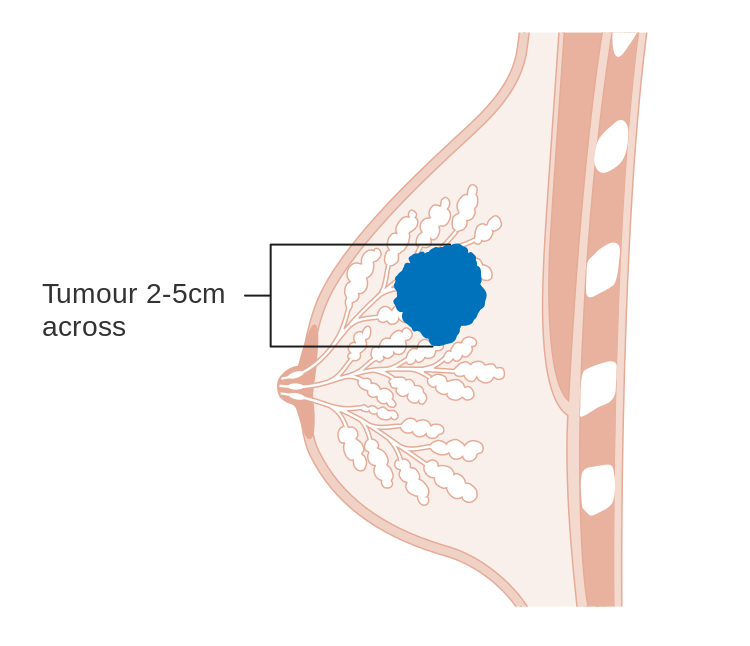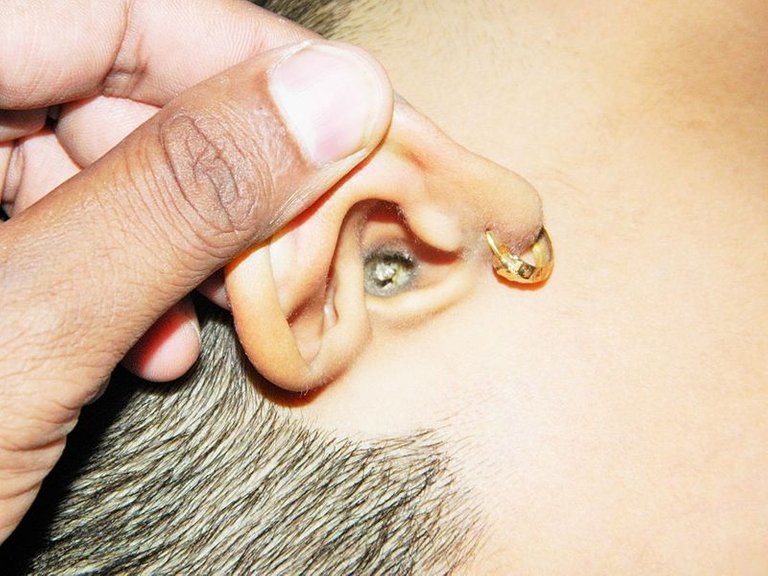I know there is probably no one reading this piece who doesn't know what earwax is and how much people detest it. Like other bodily secretions, people like to deal with earwax in private. Under social settings in Nigeria (I don't know about other parts of the world), it is socially weird to be seen poking your ears in public. This is quite justifiable because, actually, in this part of the world (like some other regions too), earwax could have an offensive, pungent smell; which explains why it is scrubbed off as soon as it forms. Now don't get it twisted and begin to associate people of this continent with having a smelly earwax (as your continent may be among😂; just hang on, you will find out in the later paragraph). I actually got to know this while gathering info for this article.
Wikimedia commons by Anand2202 under CC BY-SA 4.0 license
That said; medically, earwax is known as cerumen. Usually occurs in colours such as gray, orange, or yellow, earwax is a waxy secretion of the ceruminious and sebaceous glands in the outer ear canal of humans and other mammals. In terms of constituents, it is generally consists in dead or worn out skin cells, hair, and other bodily detritus originating from ceruminious and sebaceous glands of the external ears. Organic components of earwax include saturated and unsaturated long chain fatty acids, cholesterol, triglycerides, alcohol and squaleneref. Earwax is believed to aid in cleaning, lubrication and preventing creeping insects from invading the inner or unreachable part of the head.
More than the above agelong functional attributes of earwax, recent research studies have shown that there are more to earwax than meet the eyes. This article seeks to bring to the fore those hidden facts you probably do not know about earwax.
According to a study published in Nature Genetics in 2006, there are two genetically determined forms of earwax — the wet earwax and the dry earwax; with the former said to be the dominant one while the later, recessive. The two forms of earwax show no remarkable biochemical differences apart from the higher concentration of lipid (50%) that is said to be present in the wet type earwax against the 20% lipid recorded in the dry type, Guest et al, 2004Ref.

wikimedia commons by Collective under CC BY-SA 3.0 license
The 2016 study identified a single base change in a gene called ATP-binding cassette C11 (ABCC11) as being the determinant of which of the type of earwax individuals of different ethnicity are more likely to end up having, specifically noting that those who posses an "Adenine" instead of a "Guanine" are more likely to have a dry earwax. The report noted an obvious inconsistency in the patterns of viscosity of earwax from individuals with different ethnic backgrounds:
While East Asians and Native Americans are more likely to have the dry type of cerumen (gray and flaky), African and Europian people are more likely to have the wet type (honey-brown, dark orange to dark-brown and moist).30-50% of South Asians, Central Asians and Pacific Islanders have the dry type of cerumen.||Source
In later years, having learnt that the same gene which is responsible for individual's underarm odor, is also implicated in the type of earwax they make, scientists at the Monell Chemical Senses Center, Philadelphia, undertook a study to measure earwax smell of individuals of different races and ethnic affiliations. The aim was to figure out whether these individuals have different earwax odors.
In conclusion, the study noted that, in tandem with what appear to be consistent with the patterns of wet/dry earwax observed along the line of human races, individuals with European and African ancestry are more likely to have smelly earwax while the opposite is the case with East Asians and Native Americans. The study, which was published in the Journal of Chromatography B tied this variation to differences in amount of sweaty socks-smelling 2-methylbutyric and isovaleric acids, and goat-smelling hexanoic acid. Bacterial action on these chemicals which is produced in much greater quantity among Europeans and Africans, accounts for the smelly underarm and earwax whereas...
...most East Asians and nearly all Koreans lack a chemical in their armpits that bacteria munch on to make body odor, because they carry this variant of the ABCC11 gene.||Source
The occurrence patterns of earwax was noted to have been so predictable that it has been used by the anthropologists in tracking ancient human migration patterns amongst Africans, EurosiansRef and EskimosRef. Scientists reasoned that reduction in sweat and body odor that are genetically attributed to individuals with East Asian and Native American ancestries may have been induced by the cold climate in which they livedRef.
There is a correction between earwax and a woman's risk for developing breast cancer, according to one epidemiologist Nicholas Petrakis of the University of California San Francisco. He noted that apocrine glands are found in both ears and breasts, and the tendency to develop breast cysts is common amongst women having high concentration of apocrine-tissue and wet earwax.

wikimedia commons by Cancer Research UK under CC BY-SA 4.0 license
Petrakis' claim of unpleasantly smelling wet earwax being a hint of possible early development of breast cysts would later be confirmed in an independent study by a group of Japanese researchers, which was featured in the Journal of Federation of American Society for Experimental Biology in 2009. In their report, Japanese scientists claimed that the same gene that has been implicated in malodorous wet earwax, is also responsible for breast cancer, and that a good understanding of this phenomenon would help physicians in early detection and treatment of breast cancer.
Two odor-causing diseases known as maple syrup urine disease and alkaptonuria or black urine disease are known to first manifest in earwax before they would become detectable in blood or urine. Earwax can also constitute a good indicator of pollution and stress levels as observed in a study involving a dead blue whale in which scientists were able to gather a great amount of information on the life history of the whale, thanks to whale's untampered earwax accumulation. This is, however, yet to be replicated in humans owing to the fact that humans always shed their earwax and other skin cells unlike whales.
I do believe that by now, you have seen that there is more to earwax than meet the eyes. It's now time for you to examine your own and see what you have got. Hahaha. Respect.
Source references
Authored by @olamseu.

Interesting post. You may want to mention that the SNP (538G>A) in the human ABC transporter ABCC11 gene results in a change in amino acid from Glycine to Arginine in the protein. Also a typo:
You mean there is a "correlation" between... or "connection" between...
Thanks for your observations. They are well appreciated
This post has been voted on by the steemstem curation team and voting trail.
There is more to SteemSTEM than just writing posts, check here for some more tips on being a community member. You can also join our discord here to get to know the rest of the community!
This post has been voted on by the steemstem curation team and voting trail.
There is more to SteemSTEM than just writing posts, check here for some more tips on being a community member. You can also join our discord here to get to know the rest of the community!
This post goes on to show how trivial things have great implications. Posts like this need more coverage so that people can take actions when they notice changes in their bodies.
I never knew the earwax gives a lot of information about one's state of health. I've made effort to publicise this by sharing on my linkedin and twitter page.
That's great. Thanks
Thanks for this post,I never knew before that there is a corrrelation between smelly underarm and earwax.But now I know.
Welcome